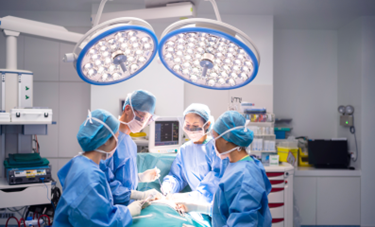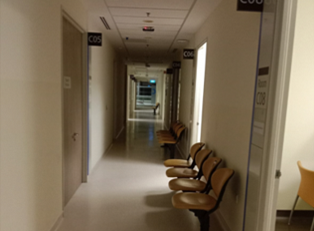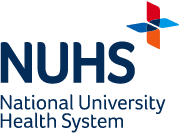Healthcare Energy and Water Efficiency
2025/11/10
Reducing energy consumption of operating theatre ventilation systems
Operating Theatres consume the most energy across our facilities with their stringent heating, ventilation, and air conditioning (HVAC) requirements, lighting, patient monitoring equipment, and long operating hours.
In 2022, we piloted a project in one Operating Theatre to explore lowering air exchange rates during non-operating hours. The results demonstrated that we maintained safety while achieving energy savings of up to 40%.
Building on this success, we began implementing the optimised protocol across all 29 Operating Theatres in 2023, targeting full deployment by the end of 2025.
This initiative was shared with the other NUHS institutions, which have since implemented similar efforts.
Optimising surgical sets used in knee replacement surgeries
Surgical instrument trays often contain many instruments that surgeons do not use.
This creates unnecessary clutter in operating rooms and consumes additional time and resources for sterilisation, an energy-intensive process.
Through a three-month trial, we reduced unnecessary instruments, improving operating room efficiency and workflow.
This initiative cut carbon dioxide emissions by over 42%. It also saves over 1,000 annual man-hours and 151,800 litres of water yearly, reducing manpower and utility costs by more than $22,000.
Partial lighting to conserve energy
Cleaning at outpatient areas begins after clinics close.
We introduced an energy-saving initiative that restructured housekeeping schedules to enable level-by-level cleaning. We shifted some tasks to daytime hours where possible and implemented partial lighting that switches off lights on unoccupied levels during evenings.
This enabled us to identify the optimal timeframe for switching lights off based on housekeepers’ productivity and working patterns.
Through this initiative, we save over 178,000kWh annually, equivalent to powering 42 four-room HDB flats for a year, whilst maintaining operational efficiency and safety.
Automatically shutting down computers to cut energy use
We deployed harmonised auto-shutdown timing across 2,500 desktop computers in our outpatient areas during non-operating hours.
We configured suitable shutdown timings with user override options and drove smooth adoption through comprehensive communication during the phased rollout.
This campus-wide energy conservation initiative now saves 436,800 kWh annually, equivalent to powering air-conditioners in 243 Singaporean households for eight hours daily for a year. The project delivers almost $95,000 in annual cost savings.
Harnessing renewable energy
To promote electric vehicle adoption, we installed 10 Electric Vehicle (EV) charging stations across NUH, with those at NUH Medical Centre, Kent Ridge Wing, and National University Centre for Oral Health Singapore (NUCOHS) available for patients and visitors.






















